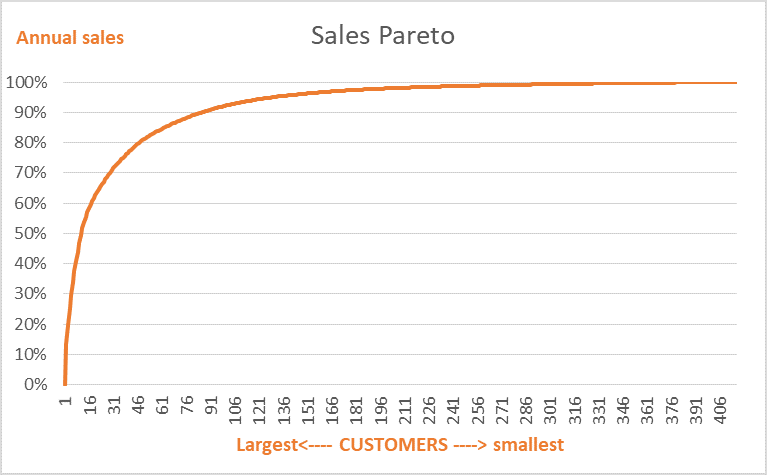
You may have heard of the Pareto principle – it’s more commonly known as the 80/20 rule and it’s a great tool to help you think about your business in a different way.
It’s basically a law of nature that was discovered by Vilfredo Pareto in the late 1800s. He was an economist and discovered that 80% of the land in Italy was owned by 20% of the population. He was also a keen gardener and discovered that 20% of his pea pods produced 80% of his peas.
The Pareto Principle is also a law of business and if you give it some thought, you’ll probably recognise one of the following:
Once you recognise this you can use this principle to help make good decisions.
But before I explain I should point out that it’s not always 80:20. It could be 90:10 or 70:80 or whatever. The point is there’s invariably a vital few and a trivial many.
The graph below shows the cumulative sales by customer for a client I recently worked with. He owns a service business and was unhappy with his profit. It shows a similar distribution to many other businesses.

By way of explanation what I have done is ranked clients by sales value from biggest to smallest and then plotted a cumulative total. In this instance the largest 83 customers (20%) generated $1. 9m (90%) of sales. Equally important is that the smallest 296 customers (71%) generated only $75K (3%) of sales.
This simple analysis led my client to ask some questions:
And
So you can see that this simple exercise, which didn’t take very long, opened up a whole can of worms.
But don’t you think it was worth it?